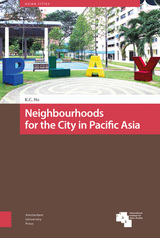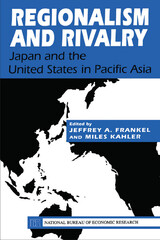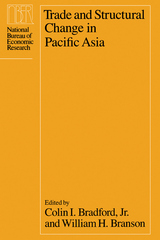3 books about Pacific Asia

Neighbourhoods for the City in Pacific Asia
Kong Chong Ho
Amsterdam University Press, 2020
The largest cities in Pacific Asia are the engines of their countries’ economic growth, seats of national and regional political power, and repositories of the nation’s culture and heritage. The economic changes impacting large cities interact with political forces along with social cultural concerns, and in the process also impact the neighbourhoods of the city. Neighbourhoods for the City in Pacific Asia looks at local collective action and city government responses and its impact on the neighbourhood and the city. A multi-sited comparative approach is taken in studying local action in five important cities (Bangkok, Hong Kong, Seoul, Singapore and Taipei) in Pacific Asia. With site selection in these five cities guided by local experts, neighbourhood issues associated with the fieldsites are explored through interviews with a variety of stakeholders involved in neighourhood building and change. The book enables comparisons across a number of key issues confronting the city: heritage (Bangkok and Taipei), local community involved provisioning of amenities (Seoul and Singapore), placemaking versus place marketing (Bangkok and Hong Kong). Cities are becoming increasingly important as centers for politics, citizen engagement and governance. The collaborative efforts city governments establish with local communities become an important way to address the liveability of cities.
[more]

Regionalism and Rivalry
Japan and the U.S. in Pacific Asia
Edited by Jeffrey A. Frankel and Miles Kahler
University of Chicago Press, 1993
As Japan's newfound economic power leads to increased political power, there is concern that Japan may be turning East Asia into a regional economic bloc to rival the U.S. and Europe. In Regionalism and Rivalry, leading economists and political scientists address this concern by looking at three central questions: Is Japan forming a trading bloc in Pacific Asia? Does Japan use foreign direct investment in Southeast Asia to achieve national goals? Does Japan possess the leadership qualities necessary for a nation assuming greater political responsibility in international affairs?
The authors contend that although intraregional trade in East Asia is growing rapidly, a trade bloc is not necessarily forming. They show that the trade increase can be explained entirely by factors independent of discriminatory trading arrangements, such as the rapid growth of East Asian economies. Other chapters look in detail at cases of Japanese direct investment in Southeast Asia and find little evidence of attempts by Japan to use the power of its multinational corporations for political purposes. A third group of papers attempt to gauge Japan's leadership characteristics. They focus on Japan's "technology ideology," its contributions to international public goods, international monetary cooperation, and economic liberalization in East Asia.
The authors contend that although intraregional trade in East Asia is growing rapidly, a trade bloc is not necessarily forming. They show that the trade increase can be explained entirely by factors independent of discriminatory trading arrangements, such as the rapid growth of East Asian economies. Other chapters look in detail at cases of Japanese direct investment in Southeast Asia and find little evidence of attempts by Japan to use the power of its multinational corporations for political purposes. A third group of papers attempt to gauge Japan's leadership characteristics. They focus on Japan's "technology ideology," its contributions to international public goods, international monetary cooperation, and economic liberalization in East Asia.
[more]

Trade and Structural Change in Pacific Asia
Edited by Colin I. Bradford Jr. and William H. Branson
University of Chicago Press, 1987
The rapid development of Pacific Asia over the past twenty years offers an excellent opportunity to analyze the dynamics of economic growth. Trade and Structural Change in Pacific Asia explores the nature and causes of changes that have occurred in the economic structure of Pacific Asia, the relationship between these changes and economic growth, and the implications of these changes for trading relationships.
Themes in the research reported here includes the sectoral composition of output and trade; rates of structural change in production and exports and their relation to economic growth; the effect of abundant resource endowments on industrialization and manufactured exports; the nature of the mix between active government policies and market forces; and the balance between demand-determined and supply-determined industrialization and exports. Many of the issues explored have important implications for United States foreign economic policy, and the volume includes a look at the basic economic and political forces influencing shifts in United States trade policy in the postwar period.
A timely and informative analysis, the volume probes the causes and consequences of economic growth in Pacific Asia, focusing on the interaction of exports of manufactured goods and the developmental process. The results reported contribute to ongoing research in structural change and economic policy and will be important to economists working on empirical patters in international trade and the process of economic development.
Themes in the research reported here includes the sectoral composition of output and trade; rates of structural change in production and exports and their relation to economic growth; the effect of abundant resource endowments on industrialization and manufactured exports; the nature of the mix between active government policies and market forces; and the balance between demand-determined and supply-determined industrialization and exports. Many of the issues explored have important implications for United States foreign economic policy, and the volume includes a look at the basic economic and political forces influencing shifts in United States trade policy in the postwar period.
A timely and informative analysis, the volume probes the causes and consequences of economic growth in Pacific Asia, focusing on the interaction of exports of manufactured goods and the developmental process. The results reported contribute to ongoing research in structural change and economic policy and will be important to economists working on empirical patters in international trade and the process of economic development.
[more]
READERS
Browse our collection.
PUBLISHERS
See BiblioVault's publisher services.
STUDENT SERVICES
Files for college accessibility offices.
UChicago Accessibility Resources
home | accessibility | search | about | contact us
BiblioVault ® 2001 - 2024
The University of Chicago Press









